THE numbers are on the way up, and fast. Since 2012,
Rosedale Charolais Stud, based at Blayney in Central West NSW, has increased processing production from 50 cattle a month to an average of 600 to 800, with April hitting a record high of 1,000. That’s roughly 300 tonnes of beef a month. Of this, 20% remains in Australia and 80%, mostly frozen, is exported, with 40% sold to the Asian market, 20% to Europe and a further 20% to the Middle East.
The commercial Rosedale herd has expanded its influence in the last six years through the paddock-to-plate brand Rosedale Ruby, a 100% hormone- and chemical-free product consisting of predominantly Angus and Shorthorn-cross Charolais steers and heifers. This successful side venture was started by James Millner, grandson of the stud’s founders Robert and Patricia Millner, his cousin and third generation farmer Sam McNiven, and Sam’s school friend and restaurateur Wang Tse.
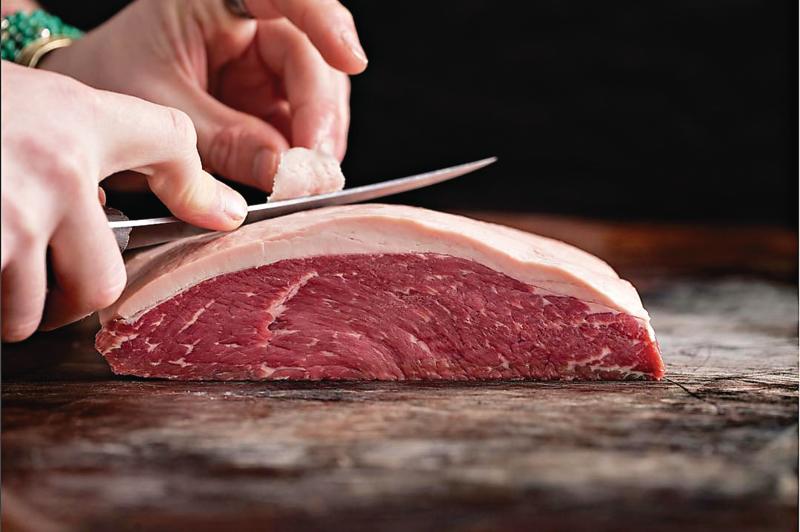 Cuts like this rump cap are being sold by butchers around the world, from London to Shanghai. Source: Rosedale Ruby Instagram.
Cuts like this rump cap are being sold by butchers around the world, from London to Shanghai. Source: Rosedale Ruby Instagram.
Drawing upon a rich history of bloodlines and a passion for producing quality carcase beef, the venture is earning the Millner family’s 46-year-old business an award-winning name in the global playing field.
Under the umbrella company Providore Global, 110-120-day grain- and grass-fed beef is distributed mostly to China and Hong Kong, along with Taiwan, Thailand, Japan, Korea and the Middle East. Recent European Union accreditation is also helping drive demand to countries such as Switzerland. On average, 70% of product is sold to food service companies (restaurants, cafeterias and caterers) and 30% to retailers.
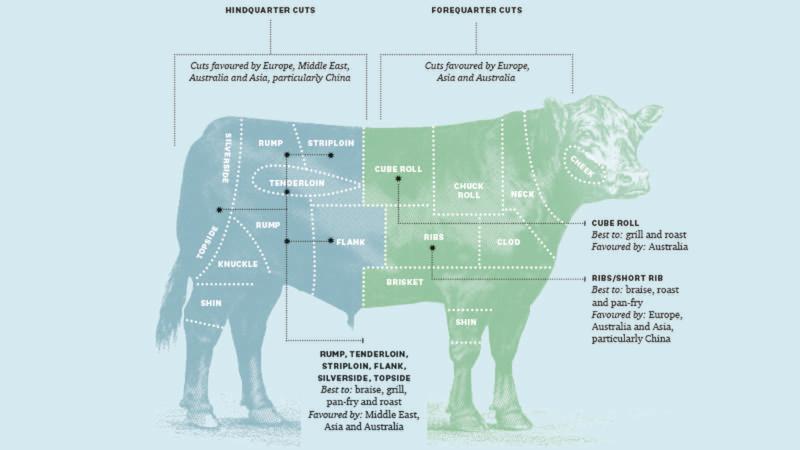 Beef cuts preferred throughout the global market.
THE DRIVE AND DEMAND OF THE ASIAN MARKET
Beef cuts preferred throughout the global market.
THE DRIVE AND DEMAND OF THE ASIAN MARKET
James says Chinese customers are hungry for their Meat Standards Australia-certified Charolais Angus product.
“They find Charolais a bit sexy because of its variation to the Angus breed,” he says. “This is also a bit of a sign that there’s too much Angus product available.”
Although red meat is a small part of the Asian diet, consumption continues to grow each year and, overall, Australia is in a good position to meet the demand, James says. He believes commodity-based markets such as Brazil may hurt Australia but, when it comes to premium markets, we are certainly ahead of other countries in terms of quality.
Although there’s more of a premium with grain-fed product compared to grass-fed, once a brand is established these costs can be passed on to customers, James explains. “People are prepared to pay a premium for consistent quality and flavour,” he says. While confident demand for Australian product in Asia will grow, he says the key for any producer is working out an overall business strategy.
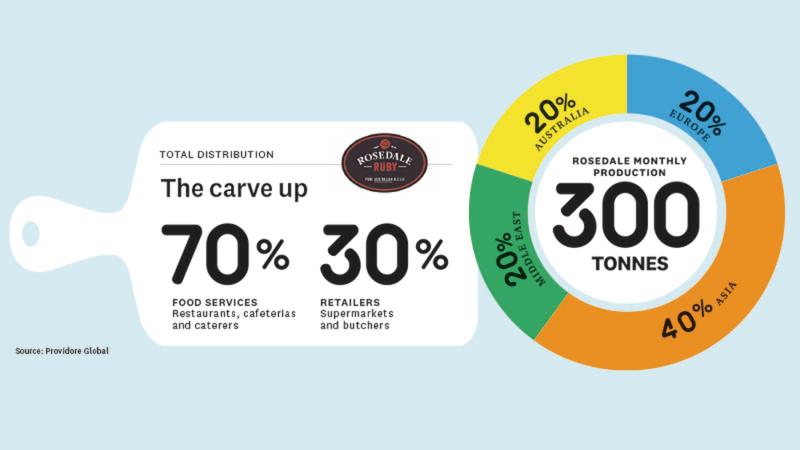
Part of the new venture’s strategy is the division of roles for the founding trio and their locations: James manages the livestock in the Central West while Sam heads up operations from his Hong Kong base and Wang, also in Hong Kong, handles all distribution channels with various customers and top-tier restaurants.
Wang is familiar with the complexities involved in menu development, ingredients and cooking methods, and understands the local tastes. “Working in China, Australia and South-East Asia, I saw firsthand the eagerness of the local chefs and diners to discover the fantastic produce available out of Australia, especially young prime Australian beef,” he says.
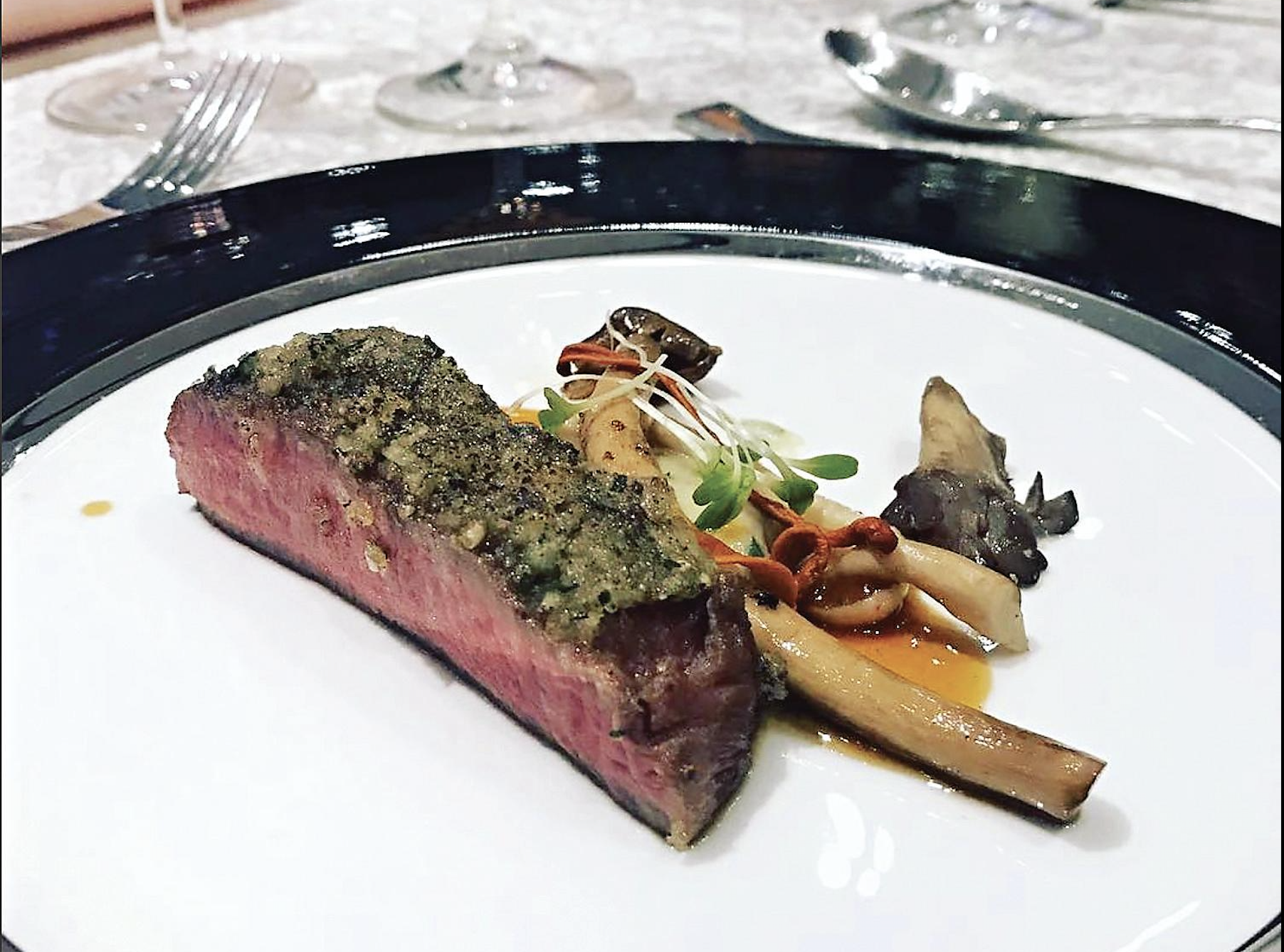 Denver steak (chuck tail flap) plated up in Shanghai in January 2017. Source: Rosedale Ruby Instagram.
Denver steak (chuck tail flap) plated up in Shanghai in January 2017. Source: Rosedale Ruby Instagram.
BEEF WATCH: STAYING ABREAST CUSTOMER TRENDS
James acknowledges the benefits of this type of experience and face-to-face interactions with customers. Regular communications like this have enabled Providore Global to adjust and streamline product supply that’s in line with customer trends.
“We couldn’t have done this without Sam being in Hong Kong. He’s really committed and has gone full-time now, so that’s really turning up the business,” James says.
He is mindful of managing growth and ensuring the business remains sustainable. “We are doing this a little bit by feel,” he says. “There’s got to be a level we don’t want to get past, otherwise it gets too busy. We’re comfortable right now but there is potential for a bit of extra growth.”
Combining their cross-sector industry knowledge and on-the-ground localised expertise has helped the trio drive their brand forward, but their real secret to success starts at a more grassroots level.
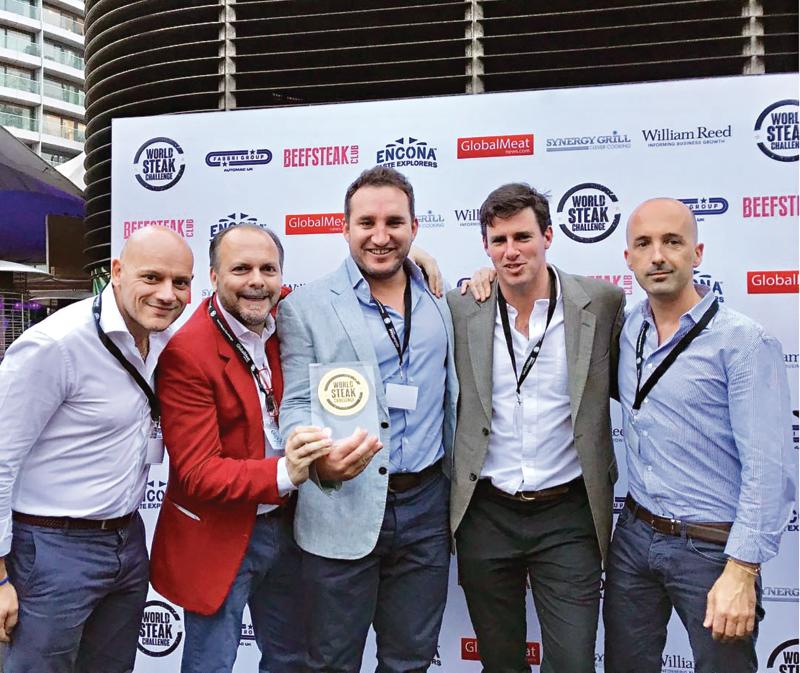 Sam McNiven (third from left) and James Millner (fourth from left) at the 2018 World Steak Challenge in London where Providore Global won a gold medal for its grain-fed Angus Charolais sirloin. Source: Rosedale Ruby Instagram.
Sam McNiven (third from left) and James Millner (fourth from left) at the 2018 World Steak Challenge in London where Providore Global won a gold medal for its grain-fed Angus Charolais sirloin. Source: Rosedale Ruby Instagram.
A key ingredient for any commercial livestock enterprise is ensuring supply to its customers domestically and internationally. To help achieve this, James and his brother Robbie, who is based at the family’s Dubbo properties Murrumbidgerie and Geurie Homestead, have implemented drought-proofing strategies.
One of these is to separate the 1,600-head herd across three locations. The Rosedale stud at Blayney, one of Australia’s first and largest Charolais polled herds, produces 150 bulls each year and runs 400 registered Charolais females. This is backed by 1,200 commercial Angus-cross Shorthorn cows, run between Dubbo and Coonamble across a total of 6,500 hectares. Within the commercial herd, 50% of the top heifers and steers are fattened on irrigated oat crops and lucerne silage and then sold through the Rosedale Ruby brand or the stud’s Coles grass-fed program.
*For more information on how other farmers across NSW are implementing drought-proofing strategies, read ‘De-stocking: Farmers making the hard choices’.
*Also find our feature on the young farmer from Walgett who’s building sheep feeders out of shipping containers that’s helping others get through dry times.
Another way of securing supply has been to send the remaining cattle to the company’s feedlot, Tallawanta, near Moree in North West NSW. In previous years, the Millners sent the cattle to other feedlots but an increasing herd size restricted growth of the business.
The yearling cattle are finished off then processed at the Northern Co-operative Meat Company in Casino, billed as Australia’s largest meat processing cooperative with a capacity of 9,000 animals a week. Using the cooperative offers Rosedale greater flexibility and control within the supply chain, allowing it to vary the numbers sent for processing, and widening the scope for cut variation.
More recently the stud’s supply has been buffered with cattle from its seed-stock customers, whose meat goes into the Rosedale Ruby brand. This helps with end product traceability, because “we know the genetics”, James says. “What we’re doing now means we won’t fall over in terms of meeting the demand we’ve created for cattle. By the end of this year nearly 50% of our customers will have some link back to the brand.”
FARMERS UNITE TO BOOST BEEF EXPORT OPPORTUNITIES
NSW Farmers’ Cattle Committee chair Bill Stacy has noticed a growing trend of farmers teaming together to build consistent supply as a viable way to make a break into the export market. “A lot of Australian farmers are looking and learning about what they need to supply and then going into the marketplace together and supplying a branded product,” he says.
Bill says the Chinese want to see a story, not just a pile of meat sitting on a shelf, so farmers must look at viable opportunities to open doors to the market.
“It’s important to get the right agent over there, getting the right cuts and packaging and telling the story through quick response (QR) codes. China is a big chunk of our economy, so understanding our customer, knowing what’s popular and matching their needs will enable us to utilise those untapped markets,” he says.
“There’s huge potential for growth in the Asian market, it’s the largest population in the world. It’s a matter of doing it the right way. They want a clean, green product.”
Bill says there’s a lot more behind the scenes than people might think, and for this reason brand development and supply chain strategies are critical.
CROSS BREEDING AND GENETICS ENHANCE MARKET OFFERINGS
The whole Rosedale Ruby venture is spearheaded out of the family’s stud, James says, where the cattle’s genetics shine through from years of development. By crossbreeding Charolais, Angus and Shorthorn breeds, the stud’s overall growth rates and profits have lifted.
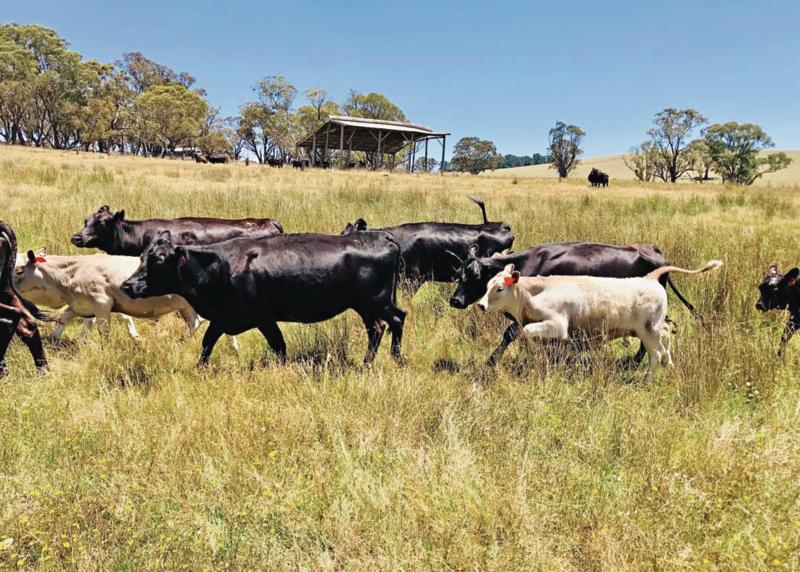 Angus cows with Charolais-cross calves in the summer grass at Blayney this February. Source: Rosedale Ruby Instagram.
Angus cows with Charolais-cross calves in the summer grass at Blayney this February. Source: Rosedale Ruby Instagram.
“We’ve tried to maintain and achieve growth, marbling ability and sufficient fat cover,” says James. “The crossbreed animals are best; they grow fast and hang up well on the carcase. By crossbreeding, we haven’t lost any of the key traits.”
James’ father Michael has carried the legacy forward from his parents, who founded the stud in 1970. The family has led various carcase competitions across the eastern seaboard of Australia and this involvement continues to challenge the stud’s genetic potential, providing an invaluable resource of data for development within the breeding program.
James says the stud tries to source the best genetics, whether they’re from North America, Europe or within Australia. “Lately we’ve been keeping the best of our cattle because we know a lot more about them and are less likely to get a surprise,” he says.
The Millners perform artificial insemination with 25% of the top stud cow and heifer breeders, and 5% are embryo transfers. Natural joinings are used with the remaining breeders to the stud sires, achieving an average fertility rate of 95%. Of the progeny, the family will keep roughly 100 bulls a year.
Rosedale held its 29th annual bull sale in May and James says it went pretty well considering the current drought. “Our averages weren’t too bad, selling 45 of the 55 Charolais bulls, with the top sale reaching $17,000.”
Each year the stud hosts three to four international groups, who visit to learn more about the stud’s operations. The stud’s Asian customers often come to Rosedale to conduct market research and are particularly interested in the Charolais breed. “They love the big white ones,” says James.
*Read more about the rising appetite for beef in the Chinese market.
EXPORT POTENTIAL: MARKETING TRICKS OF THE BEEF TRADE
Knowing exactly what your customer wants is key to creating ongoing demand, according to NSW Farmers’ Cattle Committee chair Bill Stacy.
“It’s not about one particular breed but rather knowing how to market it and understanding your customer,” Bill Stacy says.
Bill says Angus beef was the master within the industry when it came to advertising. “The Angus overtook the Hereford in the Eighties, but it wasn’t a shift in breed standards, it was the people capable of marketing the product.”
According to
Meat & Livestock Australia, affluent Chinese consumers recognise Australian beef as a high-grade product, offering several advantages that are worth paying more for, such as safety and quality, consistency, nutritional value, tenderness and overall superiority.
“As an industry, we’ve got to look at a well-structured animal that’s consistently producing top-class product for us domestically and internationally,” Bill says. “Any breed can do that. It’s a lot about marketing.
“Where the industry is tracking at the moment, even with a raging drought, we’ve got to be looking at what
other markets are available for farmers to supply to. Where is the potential and how can we get there?”
As more information becomes available and tougher conditions come into play, like continued drought and increasingly competitive markets, Bill predicts more farmers might come into the amalgamated export market.
DEALING WITH DROUGHT AND REDUCING RISK
Diversifying operations and separating the herd has enabled the Millner family to be more reactive to the market – and reduce risk during drought.
*Read other farmer’s stories on how they’ve developed their businesses by diversifying, whether that be adapting to a changing environment or creating a niche markets to cash in on greater profits.
The Rosedale stud at Blayney has the highest average rainfall (800mm) of the Millners’ three properties, although this year has “been a killer”, with only 27mm of rain in May at Blayney and 17mm at Coonamble in late June.
With irrigated cropping, Robbie Millner has been able to supply extra hay from the two Dubbo properties, but his brother James is “
hanging out for some more rain” to boost the oat crops sown in the past few months. With recent scattered showers, the crops have “turned a bit green” but James says the feed situation is “still pretty dire”.
“We’re feeding out a truckload of hay every week, as well as cottonseed and pellets,” he says. “We’ll have six to eight more weeks [as of early July] of grass provided we get further rain.”
This winter, frost has also been pretty severe which has increased the cold weather’s negative impact on cattle performance. Cooler weather can result in as much as a 50kg reduction in yearly weights due to cold winds and “bugger all grass”, James says.
*For more information on frost and the impact on farming productivity read our story, ‘The real cost of frost for NSW farmers’.